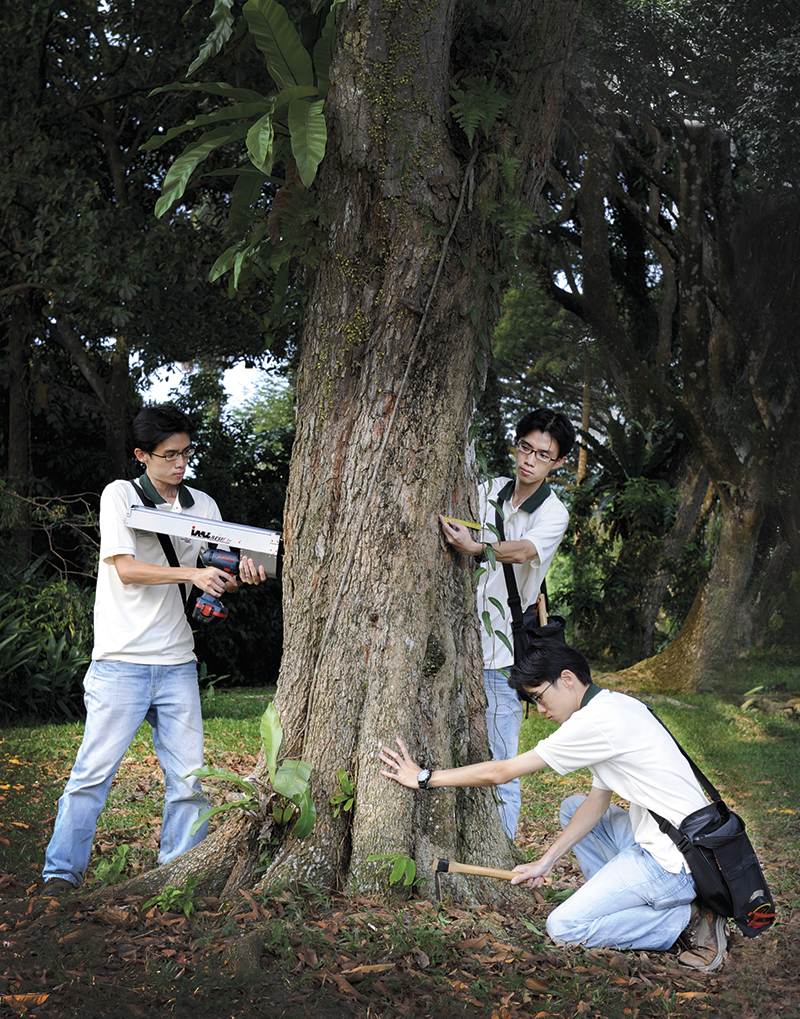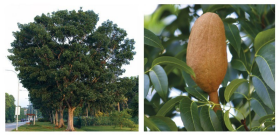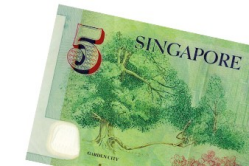PEOPLE
TREE DOCTOR
21 Jan 2013
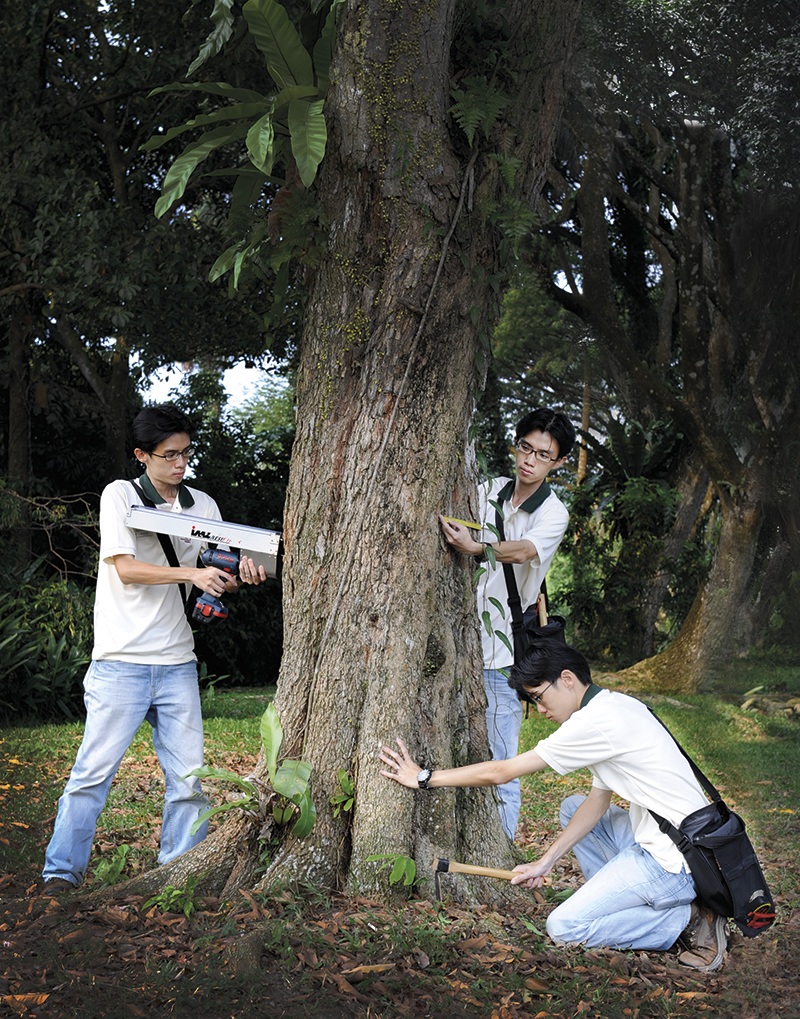
The roadside trees in Singapore might seem similar to you and me, but in the eyes of arborist 3rd Sergeant (3SG) (NS) Lee Jia Hwa, every tree is unique.
With just a small tool kit, 3SG (NS) Lee began a health check for a mature longan tree on state land near Hua Guan Avenue.
He walked around the tree, scrutinising it from bottom up, prodding its trunk with an iron probe to search for cavities or signs of decay. He made several rounds, each time with a different tool to check for something different. He also collected information such as the girth of the tree, and stored the inspection details on an electronic data logger.
Upon completion, 3SG (NS) Lee concluded that the tree was structurally sound and healthy. "There is no defect, decay or discolouration of wood in the tree. Also, the girth size has increased... This means the tree is growing healthily," said the 32-year-old Senior Manager of the Streetscape Division from the National Parks Board (NParks).
What happens if a cavity is spotted? "We will carry out further investigations to examine its severity. If it suggests possible tree failure, we will remove it before it poses a danger to public safety," said 3SG (NS) Lee.
Keeping trees healthy
As an arborist, 3SG (NS) Lee checks on the health of trees in selected public areas. Every month, he inspects between 300 and 600 trees in the Bukit Timah area which he is assigned to.
Detecting anomalies in the trees is just one of the many aspects of tree inspection. 3SG (NS) Lee also prunes saplings to improve tree structure and promote healthy growth.
Noting the similarities between nurturing trees and developing human talent, he said: "Trees behave very much like human beings... you have to nurture them from young, otherwise they will 'grow wild... It's the same as teaching a child to stay on the right path."
Trees may also adapt differently to the climates they are grown in, he added. "For instance, the Melaleuca cajuputi (Paperbark Tree) is known to be a medium-sized tree, but when we planted them along the Ayer Rajah Expressway, they could become humongous. Every tree is unique and this is the wonder of nature."
On 24/7 standby
Although he has relaxing lush green surroundings as his office, 3SG (NS) Lee's job requires him to be on standby 24/7 to handle tree failure incidents.
He recounted an incident where an 18m-tall forest tree fell, blocking traffic and causing a massive jam from Jalan Anak Bukit to Bukit Batok on a Saturday afternoon in March 2012. The father of two girls, aged four and six months, was on paternity leave when he was activated. Upon arriving at the incident site, he assessed the situation, mobilised the tree removal contractor and cleared the obstruction within 30 minutes.
Likewise, time is of the essence when 3SG (NS) Lee participates in exercises during National Service (NS) and In-Camp Training. Said the Signal Specialist from the 286th Battalion, Singapore Artillery: "Our role is to establish communications among the various detachments within a stipulated time frame, so speed is crucial."
He learnt from NS the importance of being disciplined and focused - attributes that now help him perform well under stress in his job.
Greening Singapore
3SG (NS) Lee may be a tree specialist now, but he could not identify a single tree before he started out as a Planning Executive with NParks eight years ago. The nature lover discovered his passion for trees and an uncanny ability to memorise the complicated botanical names in the course of his work.
This led to his arborist certification by the International Society of Arboriculture, an organisation which promotes the professional practice of tree cultivation.
3SG (NS) Lee also plays a part in selecting trees to be planted in Singapore. Asked about the defining moment in his career, he said: "Last year, I was in the team that was tasked to improve the greenery in NUS (National University of Singapore). Within nine months, we recommended...and planted a few hundred trees along Kent Ridge Crescent and within the faculty buildings."
Moving forward, 3SG (NS) Lee hopes to bring nature closer to more Singaporeans. There are plans by NParks to plant native trees in the heartlands to attract desirable species of birds and butterfly, he said. "It'll be nice if residents can get in touch with nature nearer their homes."
FACT #1 While roadside trees are chosen for their hardiness and the shade they provide, some come with additional uses - the fruits they bear are either edible, or reportedly have medicinal value. For example, fruits of the Broad-Leafed Mahogany (Swietenia macrophylla) are said to have medicinal properties that treat diabetes and high blood pressure.
FACT #2 Some leaves and fruits of the trees in our parks have interesting traits. The Autograph Tree (Clusia rosea) has thick and leathery leaves which can be written on with a pen or a fingernail.
FACT #3 There are about 2,500 species of native (Singapore, Malaysia and Indonesia origin) and non-native trees on our island. An example of a tree which originated from Singapore is the Tembusu (Fagraea fragrans), which can be found on the back of the Portrait Series $5 note.
ALSO READ IN PEOPLE
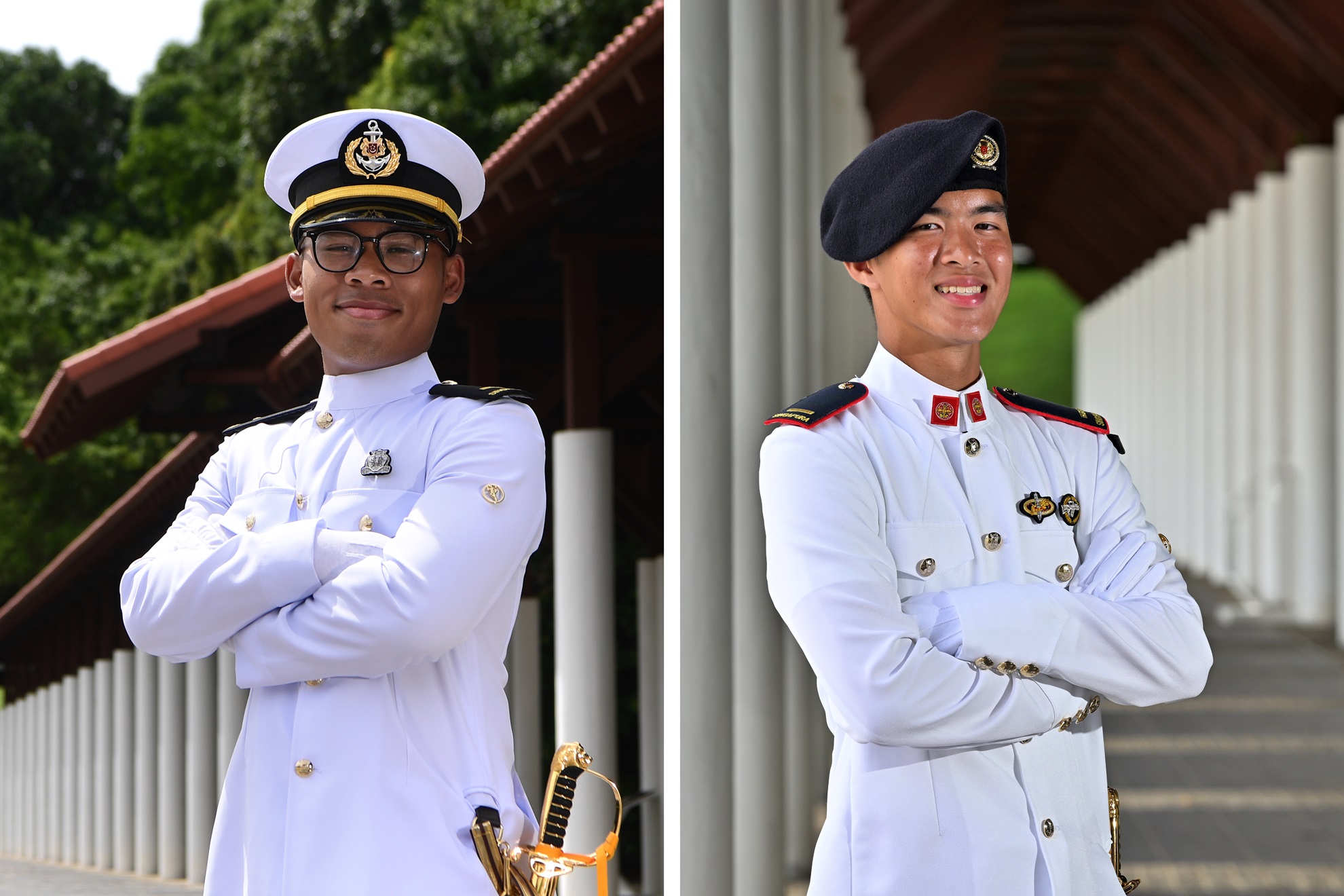
Rising above the tide & stepping forward to lead
13 Dec 2025
They’re among the SAF’s latest batch of officer graduands this year. Meet 2LT Mohamad Wira Kuriniawan and 2LT Ryan Ong, who will be heading to the Navy’s 180 Squadron and 1st Battalion, Singapore Guards respectively.
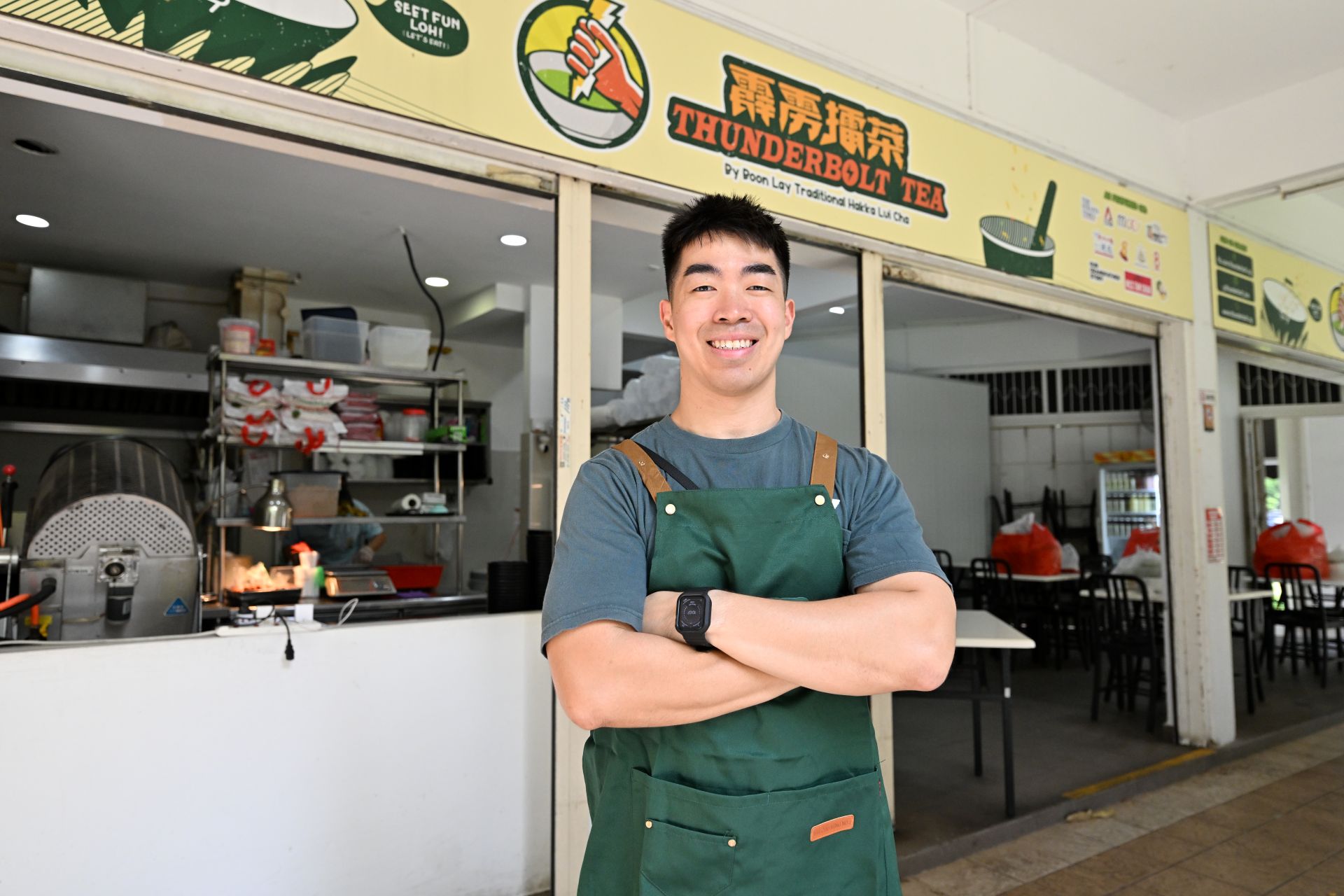
Guardian of the skies, guardian of family heritage
08 Dec 2025

Father & son, bonded by service
02 Dec 2025

